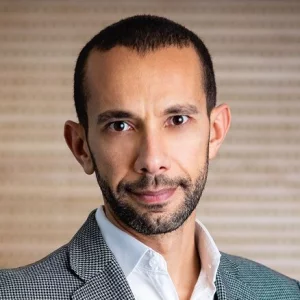Everyone is talking about climate change these days—not to mention the extreme floods, heat waves, and severe droughts that are among its worst effects. Yet when it comes to preparing for these and other impacts, the leaders of nations, cities, and companies often seem stuck in place. Why this decision gridlock? I believe it’s because decision makers don’t always have the facts they need for effective action.
Let’s face it, climate change is difficult to comprehend. Many factors are at work, and the measures needed to adapt and become resilient to climate change are difficult to explain. Many CEOs don’t know how to convince shareholders that their company needs to invest in areas that may not generate immediate financial returns. A CEO’s mandate isn’t to save the world—it’s to maximize shareholder value and make the company profitable. Government leaders, meanwhile, usually allocate resources to address immediate priorities or crises and to boost economic growth. Climate is not always as high on their agendas as it should be.
Data analysis enabled by artificial intelligence (AI) can unlock climate action. It can be used to build early warning systems that help authorities anticipate and prepare for imminent disasters. It can also be used to help predict the long-term impact of climate change and identify the optimal solutions. And data can provide the critical information leaders need to understand both the cost of inaction and the socioeconomic returns on their climate investments.
Data can show the cost of climate inaction--and the socioeconomic returns on potential adaptation projects.
This is easier said than done, of course. But the data and mathematical models for this kind of climate-impact analysis already exist.
Take early warning systems for bush fires. By analyzing climate and precipitation patterns and comparing them to data from all previous years, you can quite accurately predict whether this year will be particularly dry in a certain area. You can study patterns of vegetation in California or Australia, say, and learn from past fires in other places to determine whether there’s a high probability of a major conflagration in the next few weeks. This can help determine whether officials need to start clearing dried vegetation, for instance, or preparing the local population to react quickly in case of fire.
Similarly, you can reasonably predict the likelihood of an extreme storm, not only in so many hours or days but even in weeks or months. In one East African country, for example, we are working with an organization to develop an early warning system for extreme storms; it can predict where such a storm is likely to occur within the next six months.
AI-enabled data analysis can also help you model the longer-term socioeconomic impacts of a combination of climate events for a region, a country, or city. Take, for instance, a drought. Where exactly will you see the impact? What will be the second- and third-order consequences? By how much will a drought decrease output for farmers in a particular community?
By looking at historical data, you can determine the volume of past wheat harvests on every farm. And you can monitor the status of those farms using satellite images. From there, you can manipulate large amounts of data and use rule-based modeling and AI to extrapolate the impact of the drought on people and the economy—and, further along the value chain, how it will affect the cost of crops and consumer prices.
The Sustainable Advantage: Insights on Creating Competitive Advantage Through Sustainability
Then you can add other risks into the equation. You can calculate the effects of flooding from rising sea levels and torrential rains for coastal areas, in increments as small as 500 meters. And using data on 2,000 sea walls built around the world, you can estimate how much damage can be prevented by building one in each area compared with the socioeconomic return on investment of other climate solutions. Then you can set priorities for an effective adaptation and resilience strategy and mobilize the required funding.
You don’t have to invent the science to conduct this kind of climate-impact analysis—it already exists. What’s required is a systematic approach to orchestrating the best available data in order to pinpoint climate risks, quantify their impacts, identify priorities, and help break the cycle of inaction—and in the process, enable the world to adapt to climate change and become resilient.







